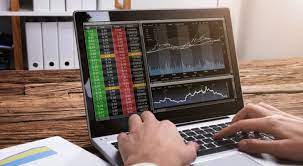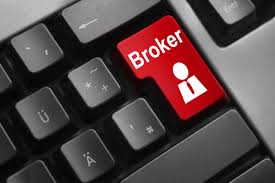What Are Conventional Brokers Vs. Direct-Access Brokers
Traders are a demanding group of people. Having the appropriate trading platform may make all the difference in the world since the margin between success and failure in markets can be as thin as a sheet of paper.
Author:Camilo WoodReviewer:James PierceFeb 04, 202226.9K Shares770.1K Views

Traders are a demanding group of people. Having the appropriate trading platform may make all the difference in the world since the margin between success and failure in markets can be as thin as a sheet of paper.
In order to make a livelihood, day traders open and close several deals during the course of a single day. Fast and dependable transaction execution, the lowest fees, and easy contact with customer care are all necessary components of this approach.
What Are Conventional Brokers
Online brokers often route client orders to market makers and other liquidity providers through pre-arranged order flow agreements. It might take anything from a few seconds to many minutes to complete this multi-step procedure. It is common for these brokers to have slower execution times since they concentrate more importance on research and basic analysis than on speed.
In addition to research and assistance, these brokers, who are often referred to as "full-service brokers," also provide retirement planning, tax counseling, and much more. The fees at full-service brokerage companies are far greater than those paid by brokers with direct access, thus this convenience does not come cheap (which I will explain further below). For investors and retail swing traders, full-service brokers are a solid option, but for day traders, they aren't the best option.
What Are Direct-Access Brokers
Fast and faultless order execution is critical for day traders since their entry and exit points are sometimes just a few seconds apart. People are frequently baffled as to how traders are able to enter and exit transactions in such a short period of time. This question may be answered by direct-access brokers. Unlike a full-service broker, these companies specialize on speed and order execution rather than research and guidance for clients.
Brokers that provide direct access to stock exchanges, such as the NASDAQ and the NYSE, generally use complex computer software that enables traders to trade directly with stock exchanges or with other persons over electronic communication networks (ECNs). An instantaneous confirmation of direct-access trading system transactions appears on the screen of a computer user as soon as they are completed. For retail merchants like us, this has opened up a new route. In the past, it was almost difficult for a retail trader sitting in their home office to trade on the exchanges from their computer.
You had to call a broker and ask for transactions, which may take minutes or hours depending on the firm. Streaming quotations and market data, interactive charts, Level 2 NASDAQ quotes, and other real-time tools formerly available exclusively to Wall Street pros are now available to active traders. As a result of these brokers' cost-cutting efforts, you may expect to pay much less commission than you would with a typical full-service brokerage.
Disadvantages Of Direct-Access Brokers
Direct-access brokers are a must for day traders, but employing them comes with several drawbacks, such as high volume requirements and a need for technical expertise. If a minimum monthly trading volume is not attained, some businesses levy inactivity fees. A $10 per month inactivity fee is levied on low net value accounts that generate less than $10 in commissions each month. The inactivity charge for a given month may be reduced by the transaction fees and commissions collected during that month. As a result, a minimum monthly commission is generally paid to the brokerage as an inactivity charge. Some direct-access brokers, on the other hand, do not need a certain amount of trading volume each month.
New and unskilled traders may have a hard time adapting to direct-access trading because of this. When it comes to things like trading choices and order routing, it helps to have some background knowledge of the processes and procedures involved. As a result, traders usually advise clients to familiarize themselves with the broker's simulator platform before opening a real account there. Using direct-access trading, you're just a click away from making a potentially disastrous error and blowing up your account, but at a full-service brokerage, an agent may detect your mistake or warn you before you actually execute your order.
Summary
For this reason, you should visit their website and inquire about their services, since many brokerage companies have lately started to provide both direct-access and full-service options (such as advise and research).
BMO Bank of Montreal InvestorLine, RBC Direct Investing and CIBC Investor's Edge are examples of full-service brokers in Canada that are not suitable for day trading. While some brokers just provide direct-access trading, Interactive Brokers Canada and Questrade offer both direct access trading and full service brokerage.
Brokers like TD Ameritrade, Lightspeed Trading, Interactive Brokers, and CenterPoint Securities are well-known in the United States because of their direct-access trading capabilities.

Camilo Wood
Author

James Pierce
Reviewer
Latest Articles
Popular Articles
